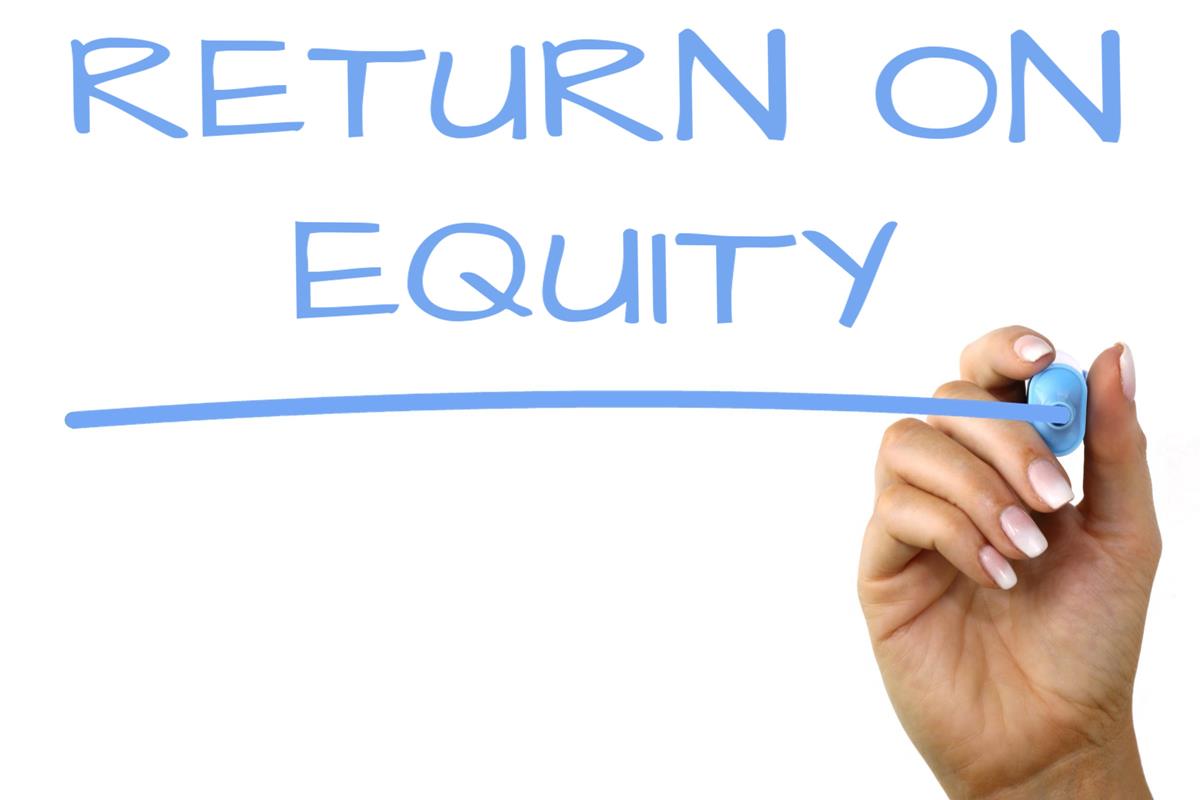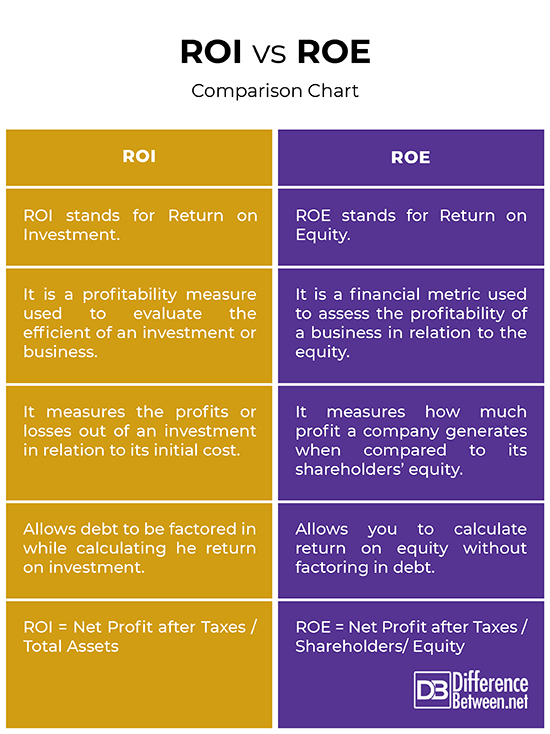Difference Between ROI and ROE
If you’re looking to expand your investment portfolio by investing in real estate, you might come around these two vaguely important terms – ROI and ROE – and if you really wish to supercharge your returns on your portfolio, these will help you determine the health of your investment. These are the most commonly used performance metrics that measure the health of your investment. The ability to measure the financial health of your investment is essential in controlling operations toward the achievement of organizational goals. One of the best measures to determine how well a business is performing is to determine the relationship between profit and the investment that generates profit. The single most widely used profitability measure is the rate of ROI. Related is the return to stockholders, known as the ROE. Let’s try to understand the differences between the two.

What is ROI?
Return on Investment (ROI) is a principal tool used to assess how well (or poorly) a business performs. It is basically a performance metric used to measure the profitability of an investment which tells you if you’ve made a good choice or not. When we say a company is performing really well, it means the company is operating effectively and is generating profits. This effectiveness is proven if the company can grow, obtain funding, and reward the suppliers of its funds. ROI is the ultimate measure of accountability that answers the question: How effective your investments are at generating income for your business? ROI seeks to define the profit made from a business investment or a business decision. It measures the profits or losses out of an investment in relation to its initial cost. It is calculated by taking your net gain or loss and divides it by the total amount you have invested. It is total profit divided by your initial investment.

What is ROE?
ROE stands for Return on Equity and is a financial metric that asses the profitability of a business in relation to the equity. Equity means ownership of assets minus the debts associated with the assets, and it refers to the interests of both owners and creditors. But in ROE, equity refers to “shareholder’s equity” only. It measures the return on shareholders’ investment in the company rather than the company’s investment in assets. This is why Warren Buffet once described ROE as one of the most important tools to measure a company’s and is management’s efficiency. So, ROE measures how much profit a company generates when compared to its shareholders’ equity. It is net income divided by shareholders’ equity. The range of ROE can differ greatly across industries. So, a company with high ROE means the company is generating more profit for its shareholders.
Difference between ROI and ROE
Definition
– ROI and ROE are both helpful performance metrics that help evaluate how healthy or efficient a company or investment is in terms of profit generation. So, return on investment (ROI) is a principal tool used to assess how well (or poorly) a business performs. ROI is a performance measure used to assess the profitability of a business or an investment by taking into account the profits or losses relative to the cost of the investment. Return on equity (ROE), on the other hand, is a financial metric that asses the profitability of a business in relation to the equity.
Purpose
– Despite the significance of these terms, they cannot be used interchangeably because they serve different purposes. ROI seeks to define the profit made from a business investment or a business decision. The purpose of calculating ROI is to measure the profitability of an investment in order to evaluate just how effective your investments are at generating income for your business. ROE, on the other hand, measures the return on shareholders’ investment rather than on the company’s investment. The purpose of calculating ROE is to evaluate how much profit a company generates when compared to its shareholders’ equity.
Formula
– ROI is calculated by taking your net gain or loss and divides it by the total amount you have invested. It is total profit divided by your initial investment.
ROI = Net Profit after Taxes / Total Assets
or, ROI = Net Income / Cost of Investment
ROE, on the other hand, measures how much profit a company generates when compared to its shareholders’ equity. It is calculated by dividing net income by shareholders’ equity.
ROE = Net Income / Shareholders’ Equity
or, ROE = Net Profit after Taxes / Shareholders’ Equity
ROI vs. ROE: Comparison Chart

Summary
While both are the most useful performance metrics that are used to evaluate the profitability of a business or an investment, they cannot be used interchangeably. ROI is a performance metric that helps evaluate the profitability of a business in relation to its assets, which in turn, helps you tell how well, or poorly the business is performing. ROI tells you if you have made a right investment, or a poor investment, or a great investment. ROE is yet another profitability measure that evaluates how well a business performs in regards to its shareholders’ equity. ROE is one of the most important tools to measure a company’s and is management’s efficiency.
- Difference Between Caucus and Primary - June 18, 2024
- Difference Between PPO and POS - May 30, 2024
- Difference Between RFID and NFC - May 28, 2024
Search DifferenceBetween.net :
Leave a Response
References :
[0]Friedlob, George T. and Franklin J. Plewa, Jr. Understanding Return on Investment. New Jersey, United States: John Wiley & Sons, 1996. Print
[1]Shim, Jae K. and Joel G. Siegel. The Vest Pocket CFO. New Jersey, United States: John Wiley & Sons, 2005. Print
[2]Bragg, Steven M. Business Ratios and Formulas: A Comprehensive Guide. New Jersey, United States: John Wiley & Sons, 2010. Print
[3]Damodaran, Aswath. Investment Valuation: Tools and Techniques for Determining the Value of Any Asset. New Jersey, United States: John Wiley & Sons, 2002. Print
[4]Image credit: https://www.thebluediamondgallery.com/handwriting/images/return-on-equity.jpg
[5]Image credit: https://www.thebluediamondgallery.com/handwriting/images/return-on-investment.jpg
